 W
WAdelheid is a dark Alauda asteroid from the outer region of the asteroid belt, approximately 121 kilometers in diameter. It was discovered by Austrian astronomer Johann Palisa at Vienna Observatory on 17 April 1888. The meaning of the asteroids's name is unknown.
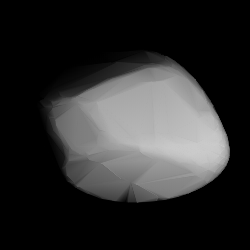 W
W1187 Afra is a dark background asteroid from the central regions of the asteroid belt. It was discovered by Germany astronomer Karl Reinmuth at Heidelberg Observatory on 6 December 1929. The X-type asteroid has a rotation period of 14.1 hours and measures approximately 32 kilometers in diameter. The origin of the asteroid's name remains unknown.
 W
WAlice is a stony background asteroid from the inner region of the asteroid belt. It was discovered by Johann Palisa on 25 April 1890 at the Vienna Observatory.
 W
W1035 Amata is a carbonaceous asteroid from the outer region of the asteroid belt, approximately 57 kilometers in diameter. It was discovered by German astronomer Karl Reinmuth at Heidelberg Observatory in southern Germany on 29 September 1924 and assigned the provisional designation 1924 SW. It was probably named after Amata from Roman mythology.
 W
WAntonia is a main belt asteroid that was discovered by French astronomer Auguste Charlois on 4 February 1888 in Nice.
 W
WBaptistina is an asteroid orbiting in the asteroid belt. It is the namesake of the Baptistina family. It was discovered on 9 September 1890 by Auguste Charlois of Nice. The source of its name is unknown. It measures about 13 to 30 kilometres in diameter. Although it has an orbit similar to the Flora family asteroids, Baptistina is an unrelated interloper. It was once considered a possible source of the impactor that caused the extinction of the dinosaurs, a possibility ruled out by the Wide-field Infrared Survey Explorer (WISE) in 2011. (See Baptistina family.)
 W
WBathilde is a large main belt asteroid that was discovered by French astronomer Auguste Charlois on 8 December 1898 in Nice.
 W
W695 Bella is a minor planet orbiting the Sun.
 W
W629 Bernardina is a minor planet orbiting the Sun.
 W
WBrigitta is a typical Main belt asteroid. It is a member of the Eos family.
 W
W1219 Britta, provisional designation 1932 CJ, is a stony background asteroid from the inner regions of the asteroid belt, approximately 11 kilometers in diameter. It was discovered on 6 February 1932, by German astronomer Max Wolf at the Heidelberg-Königstuhl State Observatory in southern Germany. The likely elongated S-type asteroid has a rotation period of 5.57 hours. Any reference of its name to a person is unknown.
 W
WCaecilia is a typical Main belt asteroid. It was discovered by Auguste Charlois on 9 September 1890 in Nice.
 W
W360 Carlova is a very large main-belt asteroid. It is classified as a C-type asteroid and is probably composed of carbonaceous material. The asteroid has a convex, roughly ellipsoid shape. The sidereal rotation period is 6.1873 hours with an axis of rotation along the ecliptic coordinates =. It was discovered by Auguste Charlois on 11 March 1893 in Nice.
 W
W628 Christine is a minor planet orbiting the Sun.
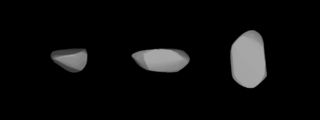 W
WClarissa is a typical main belt asteroid. The asteroid was discovered by the French astronomer Auguste Charlois on 14 November 1890 in Nice. The origin of the name is unknown. In 1991, 302 Clarissa was being considered as a possible fly-by target for the Cassini spacecraft, but was later removed from consideration.
 W
WEdburga is a typical Main belt asteroid. It was discovered by Max Wolf on 7 January 1896 at Heidelberg Observatory.
 W
WEleonora is a large, stony main-belt asteroid that was discovered by the French astronomer Auguste Charlois on January 17, 1893, in Nice.
 W
WElla is a typical Main belt asteroid. It was discovered by Max Wolf and A. Schwassmann on 11 September 1898 in Heidelberg. This is the eponymous member of a proposed asteroid family with at least 15 members.
 W
W283 Emma is a large asteroid of the asteroid belt and the namesake of the Emma family. It was discovered by Auguste Charlois on 8 February 1889, in Nice, France. The reason for its name is unknown.
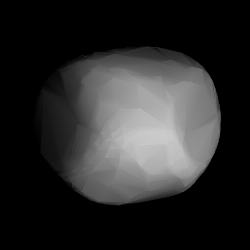 W
W636 Erika is a minor planet orbiting the Sun.
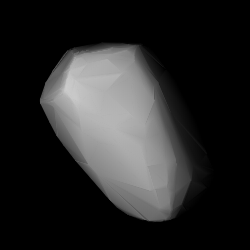 W
W891 Gunhild is a large background asteroid from the outer regions of the asteroid belt, that measures approximately 58 kilometers in diameter. It was discovered on 17 May 1918, by astronomer Max Wolf at the Heidelberg-Königstuhl State Observatory in southwest Germany. The dark D-type asteroid has a rotation period of 11.9 hours. Any reference of the asteroid's name to a person is unknown.
 W
W532 Herculina is a large asteroid, with a diameter of around 225 km.
 W
W685 Hermia is an S-type asteroid belonging to the Flora family in the Main Belt. Its diameter is about 11 km and it has an albedo of 0.281.
 W
W1182 Ilona, provisional designation 1927 EA, is a stony asteroid from the inner regions of the asteroid belt, approximately 14 kilometers in diameter. It was discovered by German astronomer Karl Reinmuth at the Heidelberg Observatory on 3 March 1927, and later named Ilona. Any reference to its name is unknown.
 W
W391 Ingeborg is an asteroid and second-largest Mars-crosser on an eccentric orbit from the asteroid belt. It was discovered by German astronomer Max Wolf on 1 November 1894, at the Heidelberg Observatory in southwest Germany. When discovered, it was observed for a couple of weeks, and follow-up observations were made in 1901 and 1904. The stony S-type asteroid has a rotation period of 26.4 hours and measures approximately 17 kilometers in diameter. Any reference of the asteroid's name to a person is unknown.
 W
WIolanda is a minor planet orbiting the Sun.
 W
W842 Kerstin is a dark background asteroid from the outer regions of the asteroid belt. It was discovered on 1 October 1916, by German astronomer Max Wolf at the Heidelberg-Königstuhl State Observatory in southwest Germany. The assumed C-type asteroid has a rotation period of 18.7 hours and measures approximately 41 kilometers in diameter. Any reference of the origin of the asteroid's name is unknown.
 W
W822 Lalage is a background asteroid from the inner regions of the asteroid belt. It was discovered on 31 March 1916, by astronomer Max Wolf at the Heidelberg-Königstuhl State Observatory in southwest Germany. The likely highly elongated asteroid with an unclear spectral type has a short rotation period of 3.3 hours and measures approximately 9 kilometers in diameter. Any reference to the origin of the asteroid's name is unknown.
 W
W868 Lova is a large and dark background asteroid, approximately 51 kilometers in diameter, from the central regions of the asteroid belt. It was discovered by German astronomer Max Wolf at the Heidelberg-Königstuhl State Observatory on 26 April 1917. The carbonaceous C-type asteroid (Ch) and has a long rotation period of 41.1 hours and is likely elongated in shape. The origin of the asteroid's name remains unknown.
 W
WMargarita is a typical Main belt asteroid. It was discovered by Auguste Charlois on 16 May 1891 in Nice.
 W
W1175 Margo, provisional designation 1930 UD, is a stony background asteroid from the outermost regions of the asteroid belt, approximately 24 kilometers in diameter. It was discovered on 17 October 1930, by astronomer Karl Reinmuth at the Heidelberg-Königstuhl State Observatory in southwest Germany. The meaning of the asteroids's name is unknown.
 W
W873 Mechthild is a dark background asteroid from the central regions of the asteroid belt. It was discovered by German astronomer Max Wolf at the Heidelberg Observatory on 21 May 1917. The primitive P-type asteroid has a rotation period of 11.0 hours and measures approximately 34 kilometers in diameter. The origin of the asteroid's name remains unknown.
 W
W1050 Meta, provisional designation 1925 RC, is a stony Eunomia asteroid from the central regions of the asteroid belt, approximately 10 kilometers in diameter. It was discovered on 14 September 1925, by German astronomer Karl Reinmuth at the Heidelberg Observatory in southwest Germany. The meaning of the asteroids's name is unknown. The presumably S-type asteroid has a rotation period of 6.14 hours and possibly an elongated shape.
 W
W347 Pariana is a metallic background asteroid from the central region of the asteroid belt. It was discovered by French astronomer Auguste Charlois at the Nice Observatory on 28 November 1892. The M-type asteroid has a short rotation period of 4.1 hours and measures approximately 49 kilometers in diameter. The origin of the asteroid's name remains unknown.
 W
WPatricia is a large Main belt asteroid.
 W
WPaulina is a typical Main belt asteroid.
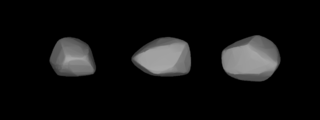 W
WPierretta is a 46 km main-belt asteroid discovered on 28 Aug 1891 by Auguste Charlois at Nice.
 W
W1214 Richilde, provisional designation 1932 AA, is a dark background asteroid from the central regions of the asteroid belt, approximately 35 kilometers in diameter. It was discovered by Max Wolf at Heidelberg Observatory in 1932. Any reference of the asteroid's name to a person is unknown.
 W
W1514 Ricouxa, provisional designation 1906 UR, is a stony Florian asteroid from the inner regions of the asteroid belt, approximately 7.5 kilometers in diameter. It was discovered on 22 August 1906, by German astronomer Max Wolf at Heidelberg Observatory in southern Germany. The origin of the asteroid's name is unknown.
 W
W665 Sabine is a minor planet orbiting the Sun that was discovered by German astronomer Wilhelm Lorenz on July 22, 1908.
 W
W838 Seraphina is a dark and large background asteroid, approximately 58 kilometers in diameter, located in the outer regions of the asteroid belt. It was discovered by German astronomer Max Wolf at the Heidelberg-Königstuhl State Observatory on 24 September 1916. The primitive P-type asteroid has a rotation period of 15.7 hours and is rather spherical in shape. Any reference to the origin of the asteroid's name is unknown.
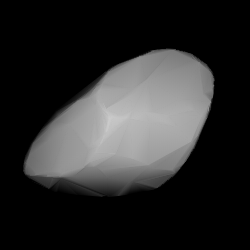 W
W882 Swetlana is a dark background asteroid from the outer region of the asteroid belt. It was discovered on 15 August 1917, by Russian astronomer Grigory Neujmin at the Simeiz Observatory on the Crimean peninsula. The X-type asteroid has a longer-than average rotation period of 29.9 hours and measures approximately 42 kilometers in diameter. The origin of the asteroid's name remains unknown.
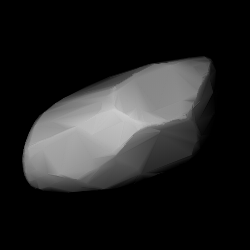 W
W825 Tanina is a stony background asteroid from the region of the Flora family, located in the inner part of the asteroid belt. It was discovered on 27 March 1916, by Russian astronomer Grigory Neujmin at the Simeiz Observatory on Crimea. The elongated S-type asteroid (SR) has a rotation period of 6.9 hours and measures approximately 13 kilometers in diameter. Any reference of the asteroid's name to a person is unknown.
 W
WTercidina is a large main-belt asteroid. It is classified as a C-type asteroid and is probably composed of carbonaceous material.
 W
WUrsula, provisional designation 1893 AL, is a dark asteroid and parent body of the Ursula family from the outer regions of the asteroid belt. It is one of the largest asteroids with a diameter of approximately 200 kilometers. It was discovered on 18 September 1893, by French astronomer Auguste Charlois at Nice Observatory in France. The meaning of the asteroids's name is unknown.
 W
WYrsa is a typical Main belt asteroid. It was discovered by Max Wolf on 16 December 1892 in Heidelberg.